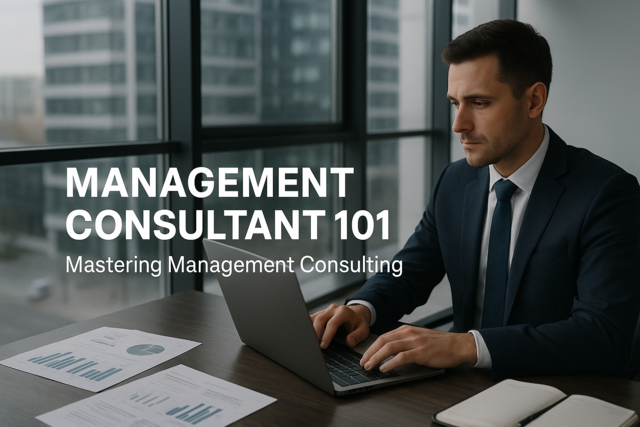Despite your best efforts at prevention, there is the possibility that workplace harassment can still happen. There may be fewer instances or less severe cases, but it is likely that there will still be the occasional instance of harassment that pops up with the best prevention measures. It is also possible that the prevention measures that are put into place can cause existing victims of harassment to come forward for help. Either way, any harassment that occurs in the workplace needs to be addressed. Taking action against any form of harassment means that you have to do things right and with a certain amount of caution in order for there to be a positive outcome.
This article will look at the steps that a business can take when addressing an instance of harassment in the workplace. Not all cases will follow these steps and some may require that more be done in order to reach a satisfactory conclusion. As with a reporting system, a business can set up their own methods of addressing harassment and this can simply act as a guide to get things going.
One of the first things that should be done in addressing harassment is to review any reports or complaints that have been filed by the victim or against the harasser. In some cases, there may be multiple reports related to the situation or multiple reports tied to the harasser if they have an established history. You want to find out what the situation and the nature of the complaint are early on in order for things to progress smoothly. Any complaints that come in should be addressed as soon as possible; ignoring complaints, even accidentally, can be interpreted by the reporter as a dismissal of their issue.1 Whomever has been put in charge of the reporting system and/or handling complaints should begin reviewing complaints as they come in. If possible, try to keep the review time somewhere within a few days of the claim's filing to ensure that things are being addressed promptly.
- What If There Isn't A Report?-If there isn't a report and there were other circumstances that alerted the proper authorities to the harassment-e.g. outside forces like police got involved, management witnessed it, etc.-then actions can go a bit differently. As frustrating as it may be, you can't force a victim to file a complaint against their harasser if they really don't want to. Even when a witness or bystander submits the initial report, not all victims will corroborate it and may even deny the claim(s) out of their own fear. You can ask-not pressure!-but there's no guarantee that they will agree to file a formal report against their harasser. The matter can still be pursued to some degree, but there may not be any cooperation from the victim and obtaining information can be difficult.
The Course of the Investigation
If there seems to be some validity to the claim, then steps to investigate the allegations often begin. Even if there isn't enough in the report to warrant an investigation or if there's a lack of information, it should still be followed up. This can simply be done by contacting the person who filed the report and asking them questions-try to fill in any details or get clarification before formally tabling the complaint and moving on. A mini investigation, if you will.
If it's decided that things should be looked into further and an investigation opened, then there are a few things that need to be addressed. Whoever is doing the investigation-be it an employee or a hired professional-the following should be included to some degree:
- Removing Bias-The person(s) assigned to investigate any allegations of harassment should be someone who is able to remain unbiased. This means someone who is not going to favor one party over the other, or side with the company over the victim(s) due to loyalties. They should be someone who has no other objectives outside of their job as investigator. If it's a feasible option (i.e. if it's in the budget), a business may want to consider hiring someone from outside of the company to lead harassment investigations. A professional will be able to remain free of bias, have an understanding of the laws surrounding harassment, and they can be informed about the company's policies and attitudes in advanced.2
- Analyzing Data and Evidence-All the information should be thoroughly analyzed and reviewed. This means looking at complaints, interviews, and any evidence that was submitted. For example, if there are threatening or harassing emails that the harasser sent the victim, those should be reviewed. Depending on how much data there is to go through, this may take some time. However, it should not be rushed, as there may be some valuable information that can help with the investigation.
- Interviewing People-Interviewing the people involved in the allegations can help clarify information and provide a better picture of the situation. Both the victim and the harasser should be interviewed, as well as any witnessed. Interview everyone separately, as some harassers may intimidate others into keeping quiet or lying through non-verbal cues or with just their presence.3 When speaking with victims and witnesses, assure them that they are safe from retaliation and that the interview is confidential within the boundaries of the investigation-the details are not going to be aired out to the whole office and the harasser does not need to know what was said or by who. They are often already uncomfortable with what has happened, so it is a good idea to try to put them at ease.
- Take Notes-Investigators should document every step of the investigation process and take careful notes. This will allow them to stay on top of the information in the investigation and document everything that occurs. As some harassment cases can get complicated, it also makes it easier to stay organized and reach a knowledgeable conclusion. They can also help with identifying any discrepancies in a person's story or any instances of corroboration (sometimes forced by the harasser). Copies of notes, data, evidence, etc. should be made just in case and as there may need to be multiple copies made for other reasons (e.g. employee files, EEOC report, legal, etc.). Note taking involving pictures, video, or audio recording, such as during interviews, should be disclosed before being taken and permission from the person(s) being recorded should be obtained before proceeding. Again, you want to make sure that everyone is comfortable during the investigation and being treated with respect.
- Collaborate and Cooperate-It's unlikely that the investigator(s) will be the only officials involved with an allegation. There are often collaborations with government agencies like the EEOC, the business owner, legal representatives, department heads, and in some cases, union leaders/representatives and police. It is recommended that the investigation and the employer fully cooperate and collaborate with any other entities involved in a harassment case to ensure a proper outcome and to be in compliance with the law(s).4 Be sure to follow all rules of confidentiality when sharing information with any collaborating entity to protect the privacy of those involved.
Administering Solutions
Any kind of disciplinary action or solutions to a harassment allegation are usually decided upon when the investigation comes to a conclusion. Outcomes will vary from case to case, so not every accused harasser will end up being fired or even having any kind of punishment directed at them. It may be discouraging, but not every allegation is confirmed as truth; things like a lack of evidence or cooperation from the affected parties can cause a complaint to be dismissed and no solution made. That should be kept in mind with every complaint or report made, but it should not discourage anyone from making a complaint or starting an investigation.
If it is determined that there was wrong doing and that the harasser is guilty, per se, then the appropriate actions should be taken. Disciplinary actions can range anywhere from termination of employment to moving them to a different part of the business, depending on the situation. The solution should be appropriate and should fit to the severity of the case.5 For example, a harasser who has been stalking his victim in and outside of work for several months should get far more than just a simple warning. Likewise, the one-time use of a derogatory joke that has already been apologized for and remorse shown should not result in termination.
- Moderating Between Parties-In some cases, solutions are administered with the assistance of a moderator. This option can be used if the findings of the investigation are unclear or if no clear conclusion was able to be reached. Most businesses offer moderators as a company resource to help settle issues between employees.6 There will undoubtedly still be conflict between the harasser and victim, so moderating a solution between them can help keep things from escalating or someone from retaliating after the investigation. All parties involved should be given this option and the moderator should have some kind of experience dealing with cases of harassment.
- Legal Issues and Restrictions-The entire process of addressing an allegation of harassment needs to be done within the boundaries of the law. This includes following privacy laws, discrimination laws, laws related to employee rights and employer rights, and anything else that can cause legal issues for anyone involved if not followed. It's not just the investigation that needs to adhere to any legal restrictions, but the solutions as well. Just as the punishments need to fit the crime, they cannot be something that violates the harasser's rights or discriminates against them in some way. It is possible that they could come back and accuse the victim, investigator, the company, their employer, etc. of discrimination if they feel that they were unjustly treated.
It is also recommended that there should be multiple solutions available if possible. There may be actions that the victim may want to take-like a lawsuit against their harasser-or the harasser may offer to leave or transfer on their own.7 Having a 'Plan B' so to speak or just another option in place for discipline can also be a good thing when there are complications with the case. For instance, if the harassment was severe enough that police were involved (e.g. rape, assault, etc.), the outcome of that investigation may impact the one conducted by the company. The business should not necessarily hold off on looking into things because of a legal investigation, but it should take into account that there might be a different outcome in one verses the other.
When the investigation is concluded and a solution has been found, those who were involved in the case should be notified. They don't necessarily have to be told all of the details, like what the punishment is and when it's going to happen, unless they are one of the main parties but they should still be alerted that a conclusion has been reached. It's more curtesy than anything, as they should be kept abreast of the situation due to their involvement. Not all punishments or solutions are going to be publicized-even to the victim-so not saying anything may seem like the situation just disappeared.
Preventing Further Cases
When everything's done with and all the appropriate parties have been addressed, there may be some consideration as to how these circumstances could be avoided. In a way, every harassment case could be treated as a learning tool in prevention, albeit a rather undesirable one. Many companies will look at a case of harassment and look at what could have been prevented based on current policies and what occurred because there wasn't anything in place against it. They use the information gathered in the investigation as a way of measuring the efficiency of their anti-harassment policies-what worked, what didn't, what needs improvement, etc. Taking that information and looking closely at it can help prevent further cases from happening. It's self-reflective and it can be greatly beneficial to potential victims of harassment.























